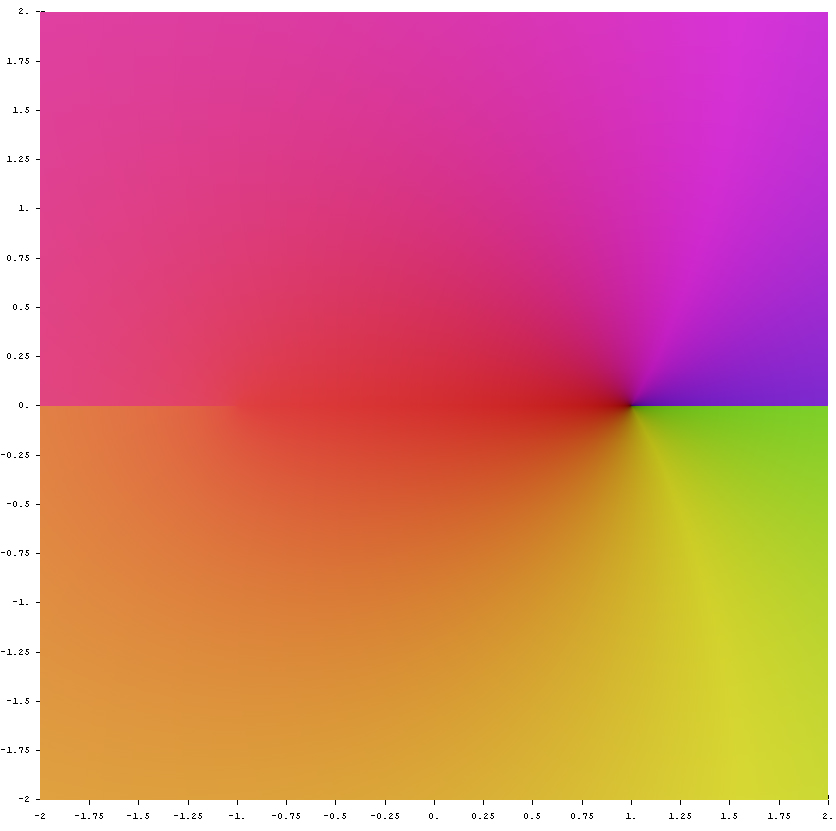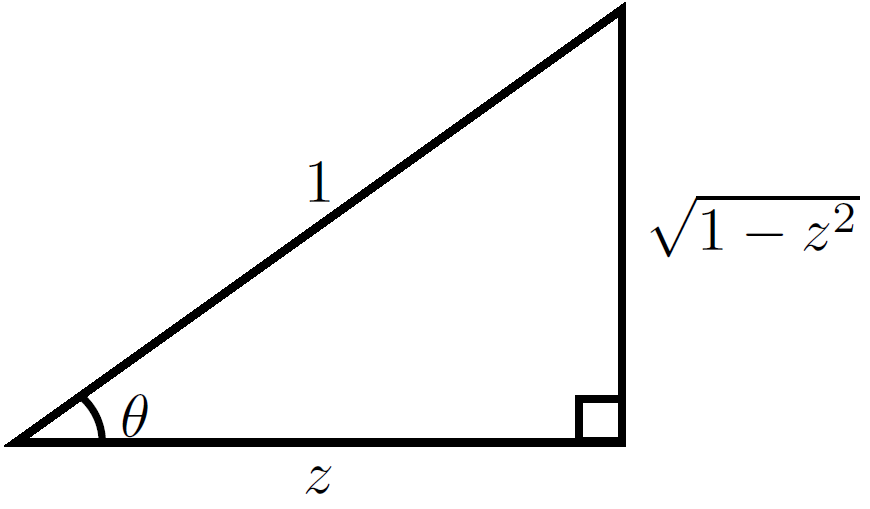Difference between revisions of "Arccos"
| Line 1: | Line 1: | ||
The function $\mathrm{arccos} \colon [-1,1] \longrightarrow [0,\pi]$ is the [[inverse function]] of the [[cosine]] function. | The function $\mathrm{arccos} \colon [-1,1] \longrightarrow [0,\pi]$ is the [[inverse function]] of the [[cosine]] function. | ||
| + | <div align="center"> | ||
<gallery> | <gallery> | ||
File:Arccos.png|Graph of $\mathrm{arccos}$ on $[-1,1]$. | File:Arccos.png|Graph of $\mathrm{arccos}$ on $[-1,1]$. | ||
File:Complex arccos.jpg|Domain coloring of analytic continuation to $\mathbb{C}$. | File:Complex arccos.jpg|Domain coloring of analytic continuation to $\mathbb{C}$. | ||
</gallery> | </gallery> | ||
| + | </div> | ||
=Properties= | =Properties= | ||
Revision as of 04:11, 31 October 2014
The function $\mathrm{arccos} \colon [-1,1] \longrightarrow [0,\pi]$ is the inverse function of the cosine function.
Properties
Proposition: $$\dfrac{d}{dz} \mathrm{arccos}(z) = -\dfrac{1}{\sqrt{1-z^2}}$$
Proof: If $y=\mathrm{arccos}(z)$ then $\cos(y)=z$. Now use implicit differentiation with respect to $z$ to get
$$-\sin(y)y'=1.$$
If we write $\theta=\mathrm{arccos}(z)$ then the following image shows that $\cos(\mathrm{arccos}(z))=\sqrt{1-z^2}$:
Hence substituting back in $y=\mathrm{arccos}(z)$ yields the formula
$$\dfrac{d}{dz} \mathrm{arccos}(z) = -\dfrac{1}{\sin(\mathrm{arccos}(z))} = -\dfrac{1}{\sqrt{1-z^2}}.█$$
Proposition: $$\int \mathrm{arccos}(z) dz = z\mathrm{arccos}(z)-\sqrt{1-z^2}+C$$
Proof: █
Proposition: $$\mathrm{arccos}(z)=\mathrm{arcsec} \left( \dfrac{1}{z} \right)$$
Proof: █


